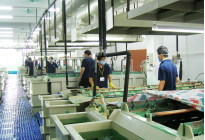Lapel pin
A lapel pin is a small pin often worn on the lapel of a jacket. Lapel pins can be ornamental or can indicate wearer's affiliation with an organization or cause. Before the popularity of wearing lapel pins, boutonnières were worn.
Medal
A medal or medallion is a small portable artistic object, a thin disc, normally of metal, carrying a design, usually on both sides. They typically have a commemorative purpose of some kind, and many are given as awards. They may be intended to be worn, su
Challenge coin
A challenge coin is a small coin or medallion, bearing an organization's insignia or emblem and carried by the organization's members.
Keychain
A keychain (also key fob or keyring) is a small ring or chain of metal to which several keys can be attached. The length of a keychain allows an item to be used more easily than if connected directly to a keyring.
Understanding the Plating Process – Add Shine and Durability to Your Custom Products
When it comes to enhancing the appearance, durability, and overall value of metal products, the plating process is essential. Whether you’re customizing medals, pins, challenge coins, or badges, high-quality plating ensures a professional, long-lasting finish.
In this article, we’ll walk you through the complete metal plating process and explain why it’s a critical step in manufacturing custom metal items.
What Is Plating?
Plating is a surface coating process where a thin layer of metal is applied to the surface of a base item. This not only gives your product a premium look but also helps protect it from corrosion, tarnish, and wear.

Step-by-Step Plating Procedure
1. Surface Cleaning
Before plating begins, the base item (usually made of zinc alloy, copper, or iron) must be cleaned to remove oil, dust, and oxidation. Any residue can prevent proper bonding during plating.
Methods used: ultrasonic cleaning, acid rinse, or alkaline solution
2. Polishing
The surface is polished by hand or machine to ensure it’s smooth and free from imperfections. This helps achieve a flawless finish once the metal coating is applied.
3. Electroplating
The item is submerged in a solution containing metal ions (such as gold, nickel, silver, or copper). An electric current is applied to bond the metal layer to the item’s surface.
Popular plating finishes include:
Gold plating (shiny or antique)
Silver plating
Black nickel
Copper
Antique bronze
Chrome
Matte or dyed finishes

4. Rinsing and Drying
After plating, the item is rinsed to remove chemical residues and then carefully dried to avoid water spots or oxidation.
5. Protective Coating (Optional)
To further protect the finish, a clear lacquer or epoxy coating can be added. This is especially useful for items exposed to frequent handling.
6. Final Inspection
Every piece goes through a thorough quality control check to ensure consistent color, thickness, and finish.
Why Plating Matters in Custom Manufacturing
Visual Appeal: A shiny or antique finish enhances the product’s aesthetics.
Durability: Plated surfaces are more resistant to scratches and corrosion.
Brand Value: Custom finishes elevate your brand’s presentation.
Custom Options: Choose from a variety of colors and textures to match your design needs.
Applications of Plating in Custom Products
Custom Medals
Challenge Coins
Metal Badges
Keychains
Commemorative Souvenirs
Looking for a Reliable Plating Service?
At Surewin, we specialize in custom medal manufacturing and precision plating services. With years of experience and advanced equipment, we ensure every item receives a flawless, durable finish.
Contact us today to learn more about our plating process or to request a free quote for your custom project!
